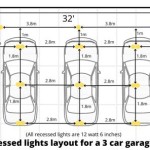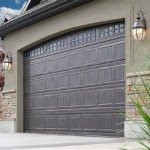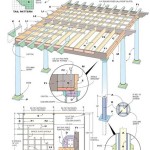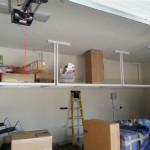```html
Accessing Your Garage Door Opener: A Comprehensive Guide
Accessing a garage door opener system involves more than simply pressing a button on a remote. It encompasses understanding the various access methods, security considerations, troubleshooting common problems, and keeping the system maintained for optimal performance. This article provides a comprehensive overview of these facets, aiming to equip readers with the knowledge necessary to navigate the intricacies of garage door opener access.
The primary objective of a garage door opener is to grant authorized entry to a garage while preventing unauthorized access. This balance between convenience and security necessitates careful consideration of the chosen access methods and their respective vulnerabilities. Modern garage door openers incorporate a range of technologies designed to enhance security, but understanding how these technologies function and how to manage them effectively is crucial.
Understanding Common Access Methods
The most prevalent methods for accessing a garage door opener system are remote controls, keypads, and smartphone integration. Each method possesses unique advantages and disadvantages regarding convenience, security, and cost. Weighing these factors is essential when selecting the most appropriate access solution for a specific need or situation.
Remote Controls: Remote controls are the traditional and arguably the most widely used method for operating garage doors. They use radio frequency (RF) signals to communicate with the garage door opener unit. Modern remote controls often employ rolling code technology, which generates a new security code each time the button is pressed. This prevents replay attacks, where an unauthorized individual might record and retransmit the signal to gain entry. Remote controls offer a convenient and portable solution, but they can be lost or stolen, potentially compromising garage security. Programming a new remote control usually involves pressing a "learn" button on the garage door opener motor unit and then pressing the button on the remote control to be programmed. Specific instructions will vary depending on the manufacturer and model.
Keypads: Keypad access provides a keyless entry option, eliminating the need for a physical key or remote control. Keypads are typically mounted on the exterior wall of the garage and require a user to enter a pre-programmed code to activate the garage door opener. Keypads are convenient for families with multiple members who need access, as each person can be given the code. However, keypad security can be compromised if the code is easily guessed or if the keypad is not maintained properly. It is crucial to change the code periodically and ensure the keypad is protected from weather and physical damage. Backlit keypads are recommended for ease of use in low-light conditions.
Smartphone Integration: Smartphone integration represents a more advanced method of accessing a garage door opener. This typically involves connecting the garage door opener to a home Wi-Fi network and using a dedicated smartphone application to control the door. This method offers several advantages, including the ability to monitor the garage door's status remotely, receive notifications when the door is opened or closed, and grant temporary access to visitors. Smartphone integration adds a layer of convenience and control but relies on a stable Wi-Fi connection and the security of the home network. Users should ensure their Wi-Fi network is password-protected and that the smartphone application is regularly updated with the latest security patches.
Addressing Security Concerns
Security is paramount when dealing with garage door opener access. A compromised garage door can provide unauthorized access to a home, making it essential to implement robust security measures. Several key areas should be considered to mitigate security risks.
Rolling Code Technology: As mentioned earlier, rolling code technology is a crucial security feature in modern garage door openers. This technology generates a unique code each time the remote control is used, making it significantly harder for unauthorized individuals to intercept and replicate the signal. When purchasing a new garage door opener, verifying that it utilizes rolling code technology is highly recommended.
Regular Code Changes: For keypad access, regularly changing the access code is a simple but effective security measure. Choosing a complex and unpredictable code is crucial, avoiding easily guessable combinations like birthdays or addresses. Communicating the new code only to authorized individuals is equally important.
Physical Security: Maintaining the physical security of the garage door opener and its components is also critical. Ensure the garage door opener motor unit is securely mounted and that all wiring is properly connected. Inspect the garage door itself for any signs of damage or weakness, as a damaged door can be more easily forced open. Consider installing a garage door shield, which is a device that protects the emergency release cord from being accessed by unauthorized individuals from outside the garage.
Monitoring Systems: Consider integrating the garage door opener with a home security system that includes sensors to detect when the door is opened or closed. This can provide real-time alerts to a smartphone or security monitoring company, allowing for immediate response to any unauthorized activity. Some systems also offer video surveillance capabilities, enabling users to visually verify the status of their garage and its surroundings.
Troubleshooting Common Access Problems
Garage door opener systems, like any mechanical and electronic device, are prone to occasional malfunctions. Understanding common problems and how to troubleshoot them can save time and money by avoiding unnecessary service calls.
Remote Control Issues: If a remote control stops working, the first step is to check the batteries. Replacing the batteries with fresh ones often resolves the issue. If the batteries are not the problem, try reprogramming the remote control to the garage door opener unit. Resetting the garage door opener by unplugging it for a few minutes and then plugging it back in can also help. If the remote control still doesn't work, it may be faulty and require replacement.
Keypad Malfunctions: Keypad malfunctions can often be attributed to worn-out buttons, water damage, or incorrect code entry. Clean the keypad with a soft, dry cloth to remove any dirt or debris. Ensure the correct code is entered, paying attention to any specific entry sequences required by the keypad model. If the keypad continues to malfunction, it may need to be replaced. Check the keypad's wiring connections to ensure they are secure and free from corrosion.
Smartphone Connectivity Problems: Smartphone connectivity issues can stem from various factors, including a weak Wi-Fi signal, incorrect network settings, or outdated application software. Ensure the smartphone is connected to a stable Wi-Fi network and that the garage door opener is also properly connected to the same network. Update the smartphone application to the latest version. Rebooting the garage door opener and the home Wi-Fi router can also resolve connectivity problems. Check the garage door opener's user manual for specific troubleshooting steps related to smartphone integration.
Sensor Problems: Most garage door openers have safety sensors at the bottom of the door tracks that prevent the door from closing if an obstruction is detected. If the garage door refuses to close and the opener light is flashing, it may indicate a problem with the sensors. Ensure the sensors are clean and aligned with each other. Remove any obstructions that may be blocking the sensor beam. If the sensors are damaged or misaligned, they may need to be replaced or adjusted.
Regular maintenance, including lubricating moving parts, inspecting wiring, and testing safety features, can prevent many of these problems from occurring in the first place. Consulting a qualified garage door technician is advisable when encountering complex issues that cannot be resolved through basic troubleshooting.
Understanding how to correctly and securely access a garage door opener is of vital importance in modern home security. By understanding the various access methods, implementing security measures, and troubleshooting common problems, individuals can ensure their garage remains safe and secure.
```
Reprogramming Your Garage Door Opener A Step By Guide Overhead Macon Warner Robins

How To Manually Close Open A Garage Door King Co

Understanding Garage Door Opener Down Force And Travel Limits

A Guide To Changing Your Garage Door Remote Batteries Giel Doors

Smart Garage Door Opener For Automatic Remote Access Mark 2 Ismartgate

A Guide To The Best Smart Garage Door Opener For 2024 Newegg Insider

Take Control Of Your Garage With Smart Door Opener In 2024 Conure

All Security Equipment Blog Access Control Gate Openers Parking Tagged Garage

How Do Garage Door Openers Work Types Of Anatomy

Are Garage Doors Secure With An Electric Operator Doormatic
Related Posts








